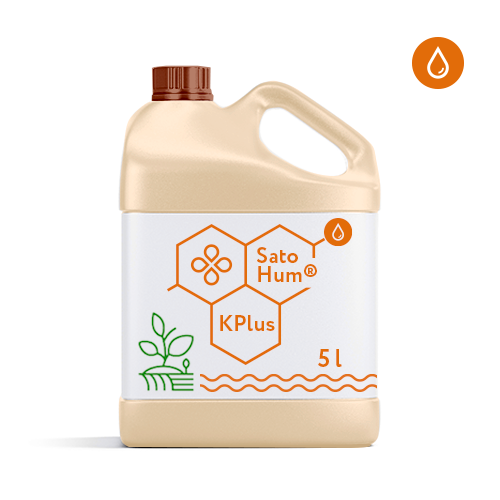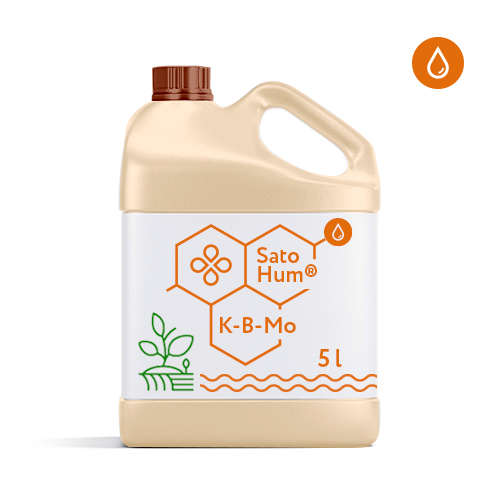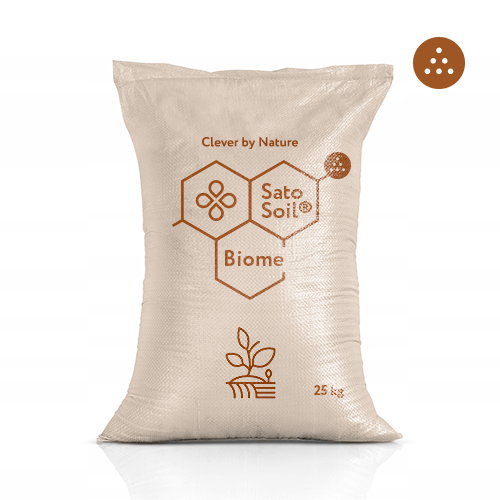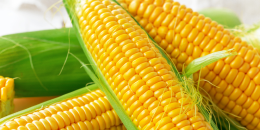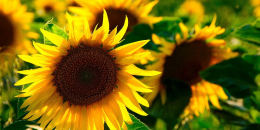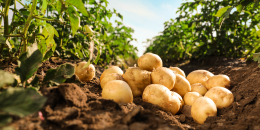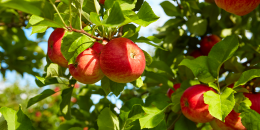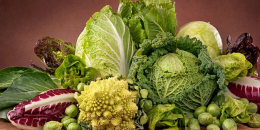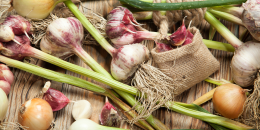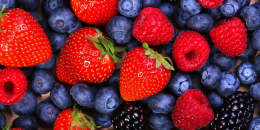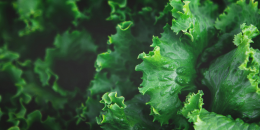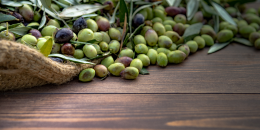A common characteristic of popular stone fruits – sweet cherries, cherries, plums, apricots and peaches – is the love of these cultures for warmth and light. Among the serious risks of stone fruit trees, experts distinguish winter injury and spring frosts: staying at excessively low temperatures and in the wind leads to freezing of the roots. Stone fruits are not cold-resistant fruit trees, are easily damaged by frosts and are more susceptible to fungal diseases – moniliosis, clasterosporiasis and coccomycosis.
Stone fruits
The root system of stone fruits is less deep than that of other fruit trees, which requires special digging and care for the trunk circle. Stone fruits react to excess moisture and to poor soil drainage by a sharp decrease in ovary and fruiting. Due to these features of stone fruits, they are prepared for the next growing cycle immediately after harvesting, stimulating their immunity, carrying out rejuvenating pruning and treating branches and leaves for future generative organs, and contribute to aeration of the upper soil layer. SatoGrow® line increases the awakening of generative buds and enhances branching.



At the beginning of the growing cycle, it is important to apply enough nitrogen or complex organo-mineral fertilizers – this develops shoots, enhances the growth of leaves and vegetative buds. Before the start of the budding, flowering and ovary stages, a comprehensive biostimulation and, if necessary, phytosanitary treatment of the foliar system are required. The availability of phosphorus in this stage ensures abundant flowering and fruit ovary.
This also applies to the saplings transplanting from nurseries – timely feeding and protection of planting material extends the stress resistance of rootstocks, improves rooting, and promotes the development of a strong root system. For rootstocks treatment, Sato® Seeds is recommended.
- infection with fungal diseases - various types of fruit rot, spotting and scab, attacks of insect pests;
- chlorosis and discolouration of leaves and fruits indicate a lack of boron and iron, which can also be caused by an excess of nitrogen in the vegetative organs;
- a lack of sugar (low Brix) in fruits indicates a manganese deficiency. Manganese also strengthens the stalks and keeps the fruits on the branches, corrects underdeveloped fruits due to adverse weather conditions, and in combination with boron and iron helps to gain color more actively;
- fragile skin is an indicator of calcium starvation. Calcium gives fruits turgor, that is, it makes the membranes of external cells more elastic.
Unlike other fruits, stone fruits don’t ripen after harvest and their shelf life is much lower. Stone fruits tolerate transportation worse than pome fruits.
A common characteristic of popular stone fruits – sweet cherries, cherries, plums, apricots and peaches – is the love of these cultures for warmth and light. Among the serious risks of stone fruit trees, experts distinguish winter injury and spring frosts: staying at excessively low temperatures and in the wind leads to freezing of the roots. Stone fruits are not cold-resistant fruit trees, are easily damaged by frosts and are more susceptible to fungal diseases – moniliosis, clasterosporiasis and coccomycosis.
The root system of stone fruits is less deep than that of other fruit trees, which requires special digging and care for the trunk circle. Stone fruits react to excess moisture and to poor soil drainage by a sharp decrease in ovary and fruiting. Due to these features of stone fruits, they are prepared for the next growing cycle immediately after harvesting, stimulating their immunity, carrying out rejuvenating pruning and treating branches and leaves for future generative organs, and contribute to aeration of the upper soil layer. SatoGrow® line increases the awakening of generative buds and enhances branching.



At the beginning of the growing cycle, it is important to apply enough nitrogen or complex organo-mineral fertilizers – this develops shoots, enhances the growth of leaves and vegetative buds. Before the start of the budding, flowering and ovary stages, a comprehensive biostimulation and, if necessary, phytosanitary treatment of the foliar system are required. The availability of phosphorus in this stage ensures abundant flowering and fruit ovary.
This also applies to the saplings transplanting from nurseries – timely feeding and protection of planting material extends the stress resistance of rootstocks, improves rooting, and promotes the development of a strong root system. For rootstocks treatment, Sato® Seeds is recommended.
- infection with fungal diseases - various types of fruit rot, spotting and scab, attacks of insect pests;
- chlorosis and discolouration of leaves and fruits indicate a lack of boron and iron, which can also be caused by an excess of nitrogen in the vegetative organs;
- a lack of sugar (low Brix) in fruits indicates a manganese deficiency. Manganese also strengthens the stalks and keeps the fruits on the branches, corrects underdeveloped fruits due to adverse weather conditions, and in combination with boron and iron helps to gain color more actively;
- fragile skin is an indicator of calcium starvation. Calcium gives fruits turgor, that is, it makes the membranes of external cells more elastic.
Unlike other fruits, stone fruits don’t ripen after harvest and their shelf life is much lower. Stone fruits tolerate transportation worse than pome fruits.
| SOILS | VEGETATION BEGINNING | GROWTH | HARVEST | ||
| SatoSoil® Biome
Reducing overwatering Raising of cold resistance Reducing the number of non-viable (dead) trees Wind load Trunk mulching Deep incorporation or mulching 0,5 – 1 Kg/tree SatoSoil® pHoenix Replanting of gardens Soil acidity correction Deep incorporation 0,6 – 1,2 kg/ m² SatoHum® K or SatoGrow® NPK/ SatoGrow® N Watering the soil improver 2 – 6 ml/10 l of water
|
SatoGrow® K Granules or
SatoGrow® NPK Granules Top dressing of planting material in greenhouses and nursery gardens Reducing risks of burns of the root system when applying nitrogen fertilizers 30 – 75 g/tree SatoHum® K Plus Thickening of fruitful branches Increasing plant immunity Soaking the roots of seedlings 10 ml/10 l of water Watering 0,1 – 0,3 l/ha SatoHum® K or SatoGrow® NPK/ SatoGrow® N Granulate activation 2 – 6 ml/10 l of water
|
SatoHum® Complex
Abundant budding and flowering No more than 3 applications/cycle: 0,1 – 0,3 l/ha SatoHum® Ca Ovary development 0,3 l/ha SatoHum® Potassium soap Pest control Fungi control 30 – 40 ml/10 l of water SatoHum® Pure In organic farming, it’s used in any non-root irrigation no more than 3 times per growing cycle 15 – 20 ml/10 l of water |
SatoHum® K-B-Mo
Correction of nutritional deficiencies 0,3 l/ha SatoHum® Ca Fruit ripening 0,3 l/ha |
SatoHum® Ca
Prevent berry cracking 0,3 l/ha SatoHum® K Increasing the keeping quality of fruits 0,3 l/ha |
|
WARNING: 4 Sato® Steps is a comprehensive crop care system that provides the basic crop needs for the main 12 macro, meso and micronutrients for an optimal growing cycle and unlocking the potential of each crop.
General recommendation for fruit bushes and trees: Perennial fruit crops (both shrubs and trees) vary in age, branching, and total crown area. Given that all these plants are perennial, there is no risk of removal of humic or fulvic acids with the end of the season, because all surplus goes into the root system and continues to nourish the tree or bush for the next season, so the dosage for fruit trees and shrubs is calculated per tree/bush.
SOILS: The need for macronutrients in fruit trees changes with their age and varies over the vegetative and generative organs of the plant, since there is no same removal of nutrients as in annual crops. Both SatoSoil® Soil improvers and SatoGrow® Biostimulants are introduced into the trunk circle for precise feeding of the tree/bush. In the autumn application, it’s recommended to introduce the maximum dose, in the spring – the minimum one. For irrigation, it’s recommended to activate granulates (soil improvers or biostimulants) with SatoHum® liquid formulations and SatoGrow® liquid organo-mineral biostimulants.
VEGETATION BEGINNING: Treatment of saplings, bushes and flowers of fruit crops with Sato® Seeds or SatoHum® K compounds is compatible with treatment by classical protectants without reducing the rates of their application, and helps to increase shoots viability and ovary development.
GROWTH: Our SatoHum® solutions have a guaranteed composition with high content of humic and fulvic acids with amino acids of plant origin. It’s not recommended to exceed the total dose of SatoHum® liquid formulations over 5 l/ha/season, starting from the germination and budding phase. If SatoHum® Potassium soap is used for prophylactic purposes, it is recommended to apply the minimum dose. If treatment is carried out to fight active pathogens/parasites, the dose indicated in the product card for the specific pest shall be applied.
HARVEST: Simultaneous fertilization with several SatoHum® products is not expected. It’s not recommended to exceed the specified application rates. For single, not systemic application of SatoHum® products, the maximum dosage of the product is recommended.






